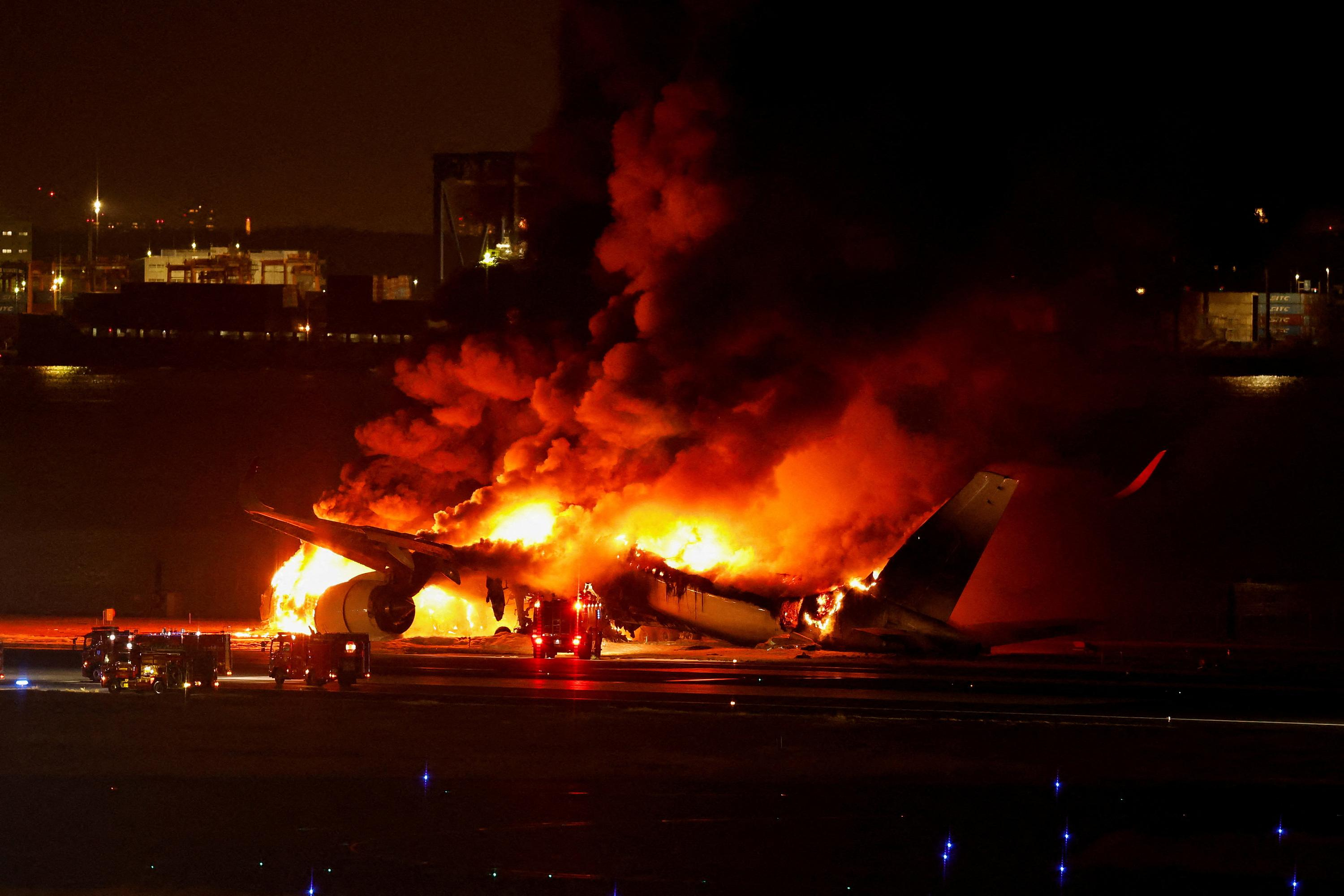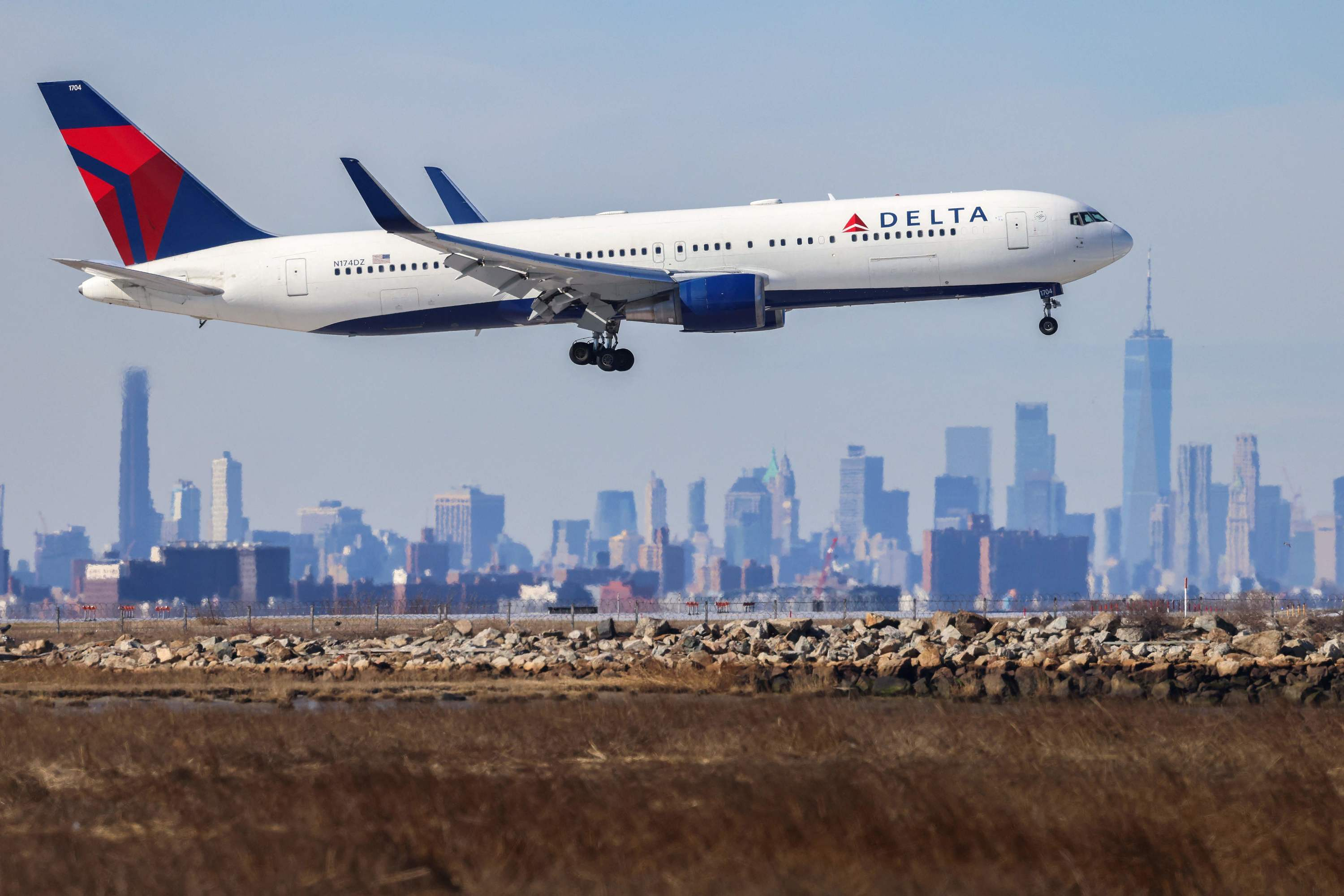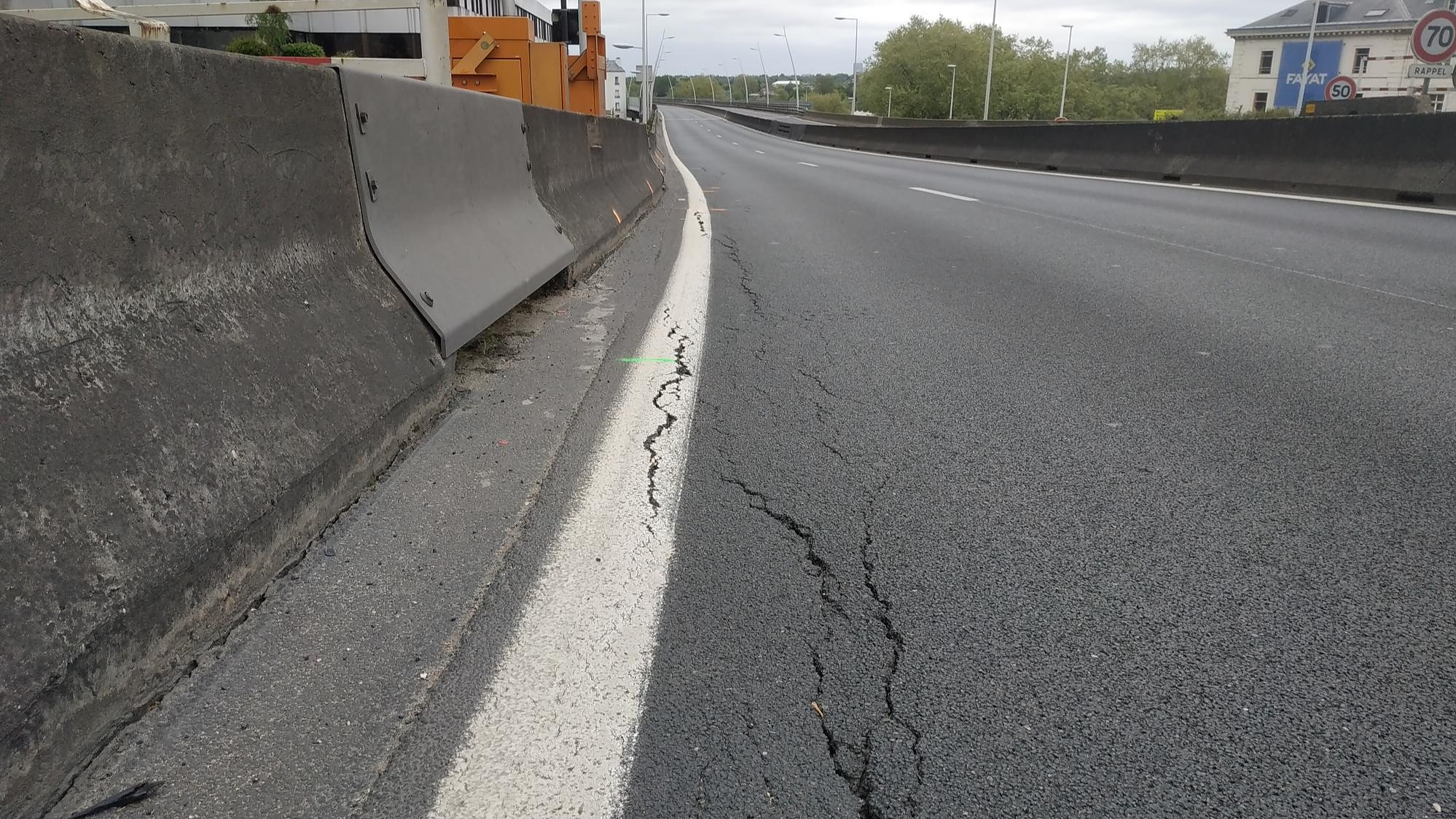“The likelihood of human error increases.” 72 hours after the spectacular and tragic collision between a Japan Airlines (JAL) A350 and a Japanese Coast Guard turboprop on the runway of Tokyo-Haneda airport, the headline of the daily Yomiuri points out, like other media, the responsibility of the small plane. With strong arguments.
The Ministry of Transport has made public the recording of conversations between the control tower and the two pilots of the aircraft just before their collision: we hear an air traffic controller asking the pilot of the coast guard plane to stop edge of the runway, then the latter conscientiously repeats the order - before, in an as yet unexplained manner, breaking it and placing himself on the runway, right in the middle of the path of the A350, authorized to land. “It reminds us of someone crossing a highway without taking the time to look to see if a car is going to pass,” explains an executive in the aeronautics industry.
Genki Miyamoto, the pilot of the turboprop and sole survivor of his crew, claimed, according to relatives cited by the press, to have had authorization to take off. Misunderstanding between the two interlocutors? In any case, he was operating in a very tense context: 24 hours earlier, the man had returned from a seven-hour surveillance mission around the island of Okinotorishima, 1,700 kilometers from Tokyo, Reuters revealed. As for the plane, it was on its third rescue mission in less than 24 hours to the disaster region of Ishikawa (western Japan), damaged by an earthquake on January 1st.
Aggravating circumstance: the coast guard plane did not have an ADS-B transponder, as revealed by the site Flightradar24, which made it undetectable on the ground from the Tokyo-Haneda control tower. This device, which allows the location of the aircraft, is gradually being generalized by the national aeronautical authorities, without being obligatory. “The protagonists were unlucky,” said Hiroshi Sugie, former JAL pilot.
The questions focus on the few minutes which preceded the disaster. The A350 hit the coastguard plane after it had been stationary on the runway for forty seconds, an unusually long time. “At large airports, planes take off at intervals of one minute and a half. Pilots who have authorization to take off do not wait too long: once committed, they try to leave as quickly as possible, for safety and so as not to delay the following ones. Why stay there?” asks an industry executive.
Another inevitable question, mirrored: the unconsciousness of the danger by the other protagonists for such a period. In the revealed audio recording, air traffic control and the A350 crew do not detect at any time the inopportune presence of the small plane on the runway. “It seems that there is no redundant measure at Haneda that would have sent an alert to the pilots and the air traffic controller – what we technically call a “safety net”,” explains a connoisseur of the Japanese airport network. .
Also read Tokyo Airport: other air disasters avoided at the last minute thanks to the coolness of the crew
A Japanese expert on airport security issues, an airline pilot, believes that Japanese airports, including Tokyo-Haneda, are on par with comparable foreign airports. “Most planes do not yet have an ADS-B transponder and if the Coast Guard plane had one, the accident was still possible. Abroad, runway incursion prevention systems also have their share of errors. Finally, only one question remains: why did the pilot of this small plane enter this runway at this time?

 B:SM will break its investment record this year with 62 million euros
B:SM will break its investment record this year with 62 million euros War in Ukraine: when kyiv attacks Russia with inflatable balloons loaded with explosives
War in Ukraine: when kyiv attacks Russia with inflatable balloons loaded with explosives United States: divided on the question of presidential immunity, the Supreme Court offers respite to Trump
United States: divided on the question of presidential immunity, the Supreme Court offers respite to Trump Maurizio Molinari: “the Scurati affair, a European injury”
Maurizio Molinari: “the Scurati affair, a European injury” Irritable bowel syndrome: the effectiveness of low-carbohydrate diets is confirmed
Irritable bowel syndrome: the effectiveness of low-carbohydrate diets is confirmed Beware of the three main sources of poisoning in children
Beware of the three main sources of poisoning in children First three cases of “native” cholera confirmed in Mayotte
First three cases of “native” cholera confirmed in Mayotte Meningitis: compulsory vaccination for babies will be extended in 2025
Meningitis: compulsory vaccination for babies will be extended in 2025 Thanks to intelligent cameras, RATP will indicate the least crowded trains on line 14
Thanks to intelligent cameras, RATP will indicate the least crowded trains on line 14 Dubai begins the transformation of Al-Maktoum to make it the future “largest airport in the world”
Dubai begins the transformation of Al-Maktoum to make it the future “largest airport in the world” When traveling abroad, money is a source of stress for seven out of ten French people
When traveling abroad, money is a source of stress for seven out of ten French people Elon Musk arrives in China to negotiate data transfer and deployment of Tesla autopilot
Elon Musk arrives in China to negotiate data transfer and deployment of Tesla autopilot Two people arrested for attempted damage to classified property at the Musée d’Orsay
Two people arrested for attempted damage to classified property at the Musée d’Orsay Death of composer Jean Musy, at 76, author of the music of Papy fait de la resistance, Les Champs-Élysées
Death of composer Jean Musy, at 76, author of the music of Papy fait de la resistance, Les Champs-Élysées Fanny Ardant prodigious in The Wound and the Thirst
Fanny Ardant prodigious in The Wound and the Thirst Hospitalized for pneumonia, Véronique Sanson cancels her concert in Nantes
Hospitalized for pneumonia, Véronique Sanson cancels her concert in Nantes Skoda Kodiaq 2024: a 'beast' plug-in hybrid SUV
Skoda Kodiaq 2024: a 'beast' plug-in hybrid SUV Tesla launches a new Model Y with 600 km of autonomy at a "more accessible price"
Tesla launches a new Model Y with 600 km of autonomy at a "more accessible price" The 10 best-selling cars in March 2024 in Spain: sales fall due to Easter
The 10 best-selling cars in March 2024 in Spain: sales fall due to Easter A private jet company buys more than 100 flying cars
A private jet company buys more than 100 flying cars This is how housing prices have changed in Spain in the last decade
This is how housing prices have changed in Spain in the last decade The home mortgage firm drops 10% in January and interest soars to 3.46%
The home mortgage firm drops 10% in January and interest soars to 3.46% The jewel of the Rocío de Nagüeles urbanization: a dream villa in Marbella
The jewel of the Rocío de Nagüeles urbanization: a dream villa in Marbella Rental prices grow by 7.3% in February: where does it go up and where does it go down?
Rental prices grow by 7.3% in February: where does it go up and where does it go down? Europeans: a senior official on the National Rally list
Europeans: a senior official on the National Rally list Blockade of Sciences Po: the right denounces a “drift”, the government charges the rebels
Blockade of Sciences Po: the right denounces a “drift”, the government charges the rebels Even on a mission for NATO, the Charles-de-Gaulle remains under French control, Lecornu responds to Mélenchon
Even on a mission for NATO, the Charles-de-Gaulle remains under French control, Lecornu responds to Mélenchon “Deadly Europe”, “economic decline”, immigration… What to remember from Emmanuel Macron’s speech at the Sorbonne
“Deadly Europe”, “economic decline”, immigration… What to remember from Emmanuel Macron’s speech at the Sorbonne These French cities that will boycott the World Cup in Qatar
These French cities that will boycott the World Cup in Qatar Mercato: Fonseca coach of AC Milan? The Lille coach speaks
Mercato: Fonseca coach of AC Milan? The Lille coach speaks Ligue 1: OM with a three-way defense, Lens changes almost nothing
Ligue 1: OM with a three-way defense, Lens changes almost nothing Ligue 1: PSG officially crowned champion of France for the 12th time
Ligue 1: PSG officially crowned champion of France for the 12th time Ligue 1: Lyon offers Monaco and gets closer to a European place
Ligue 1: Lyon offers Monaco and gets closer to a European place

















